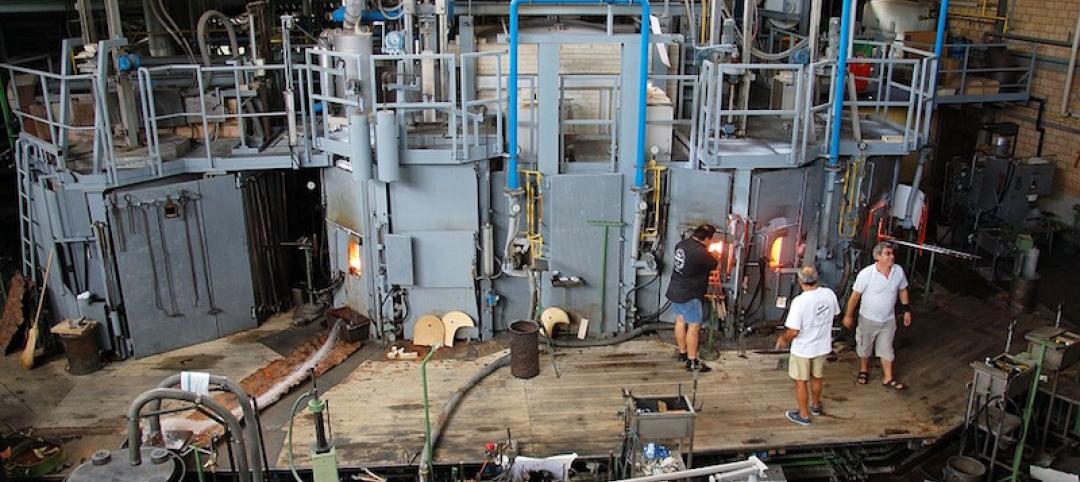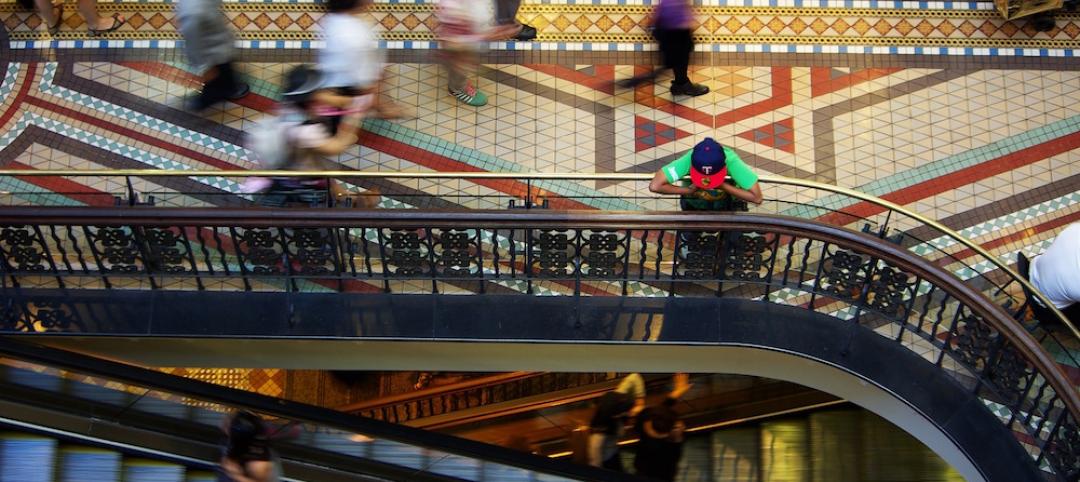With security and sustainability becoming critical factors in nonresidential construction, design sometimes takes a back seat on projects.
Case in point: New York City's second Public Safety Answering Center, known as PSAC II, which opened last June in the Bronx. The 450,000-sf facility, sitting on 8.75 acres along the Hutchinson River and Pelham Parkways, supplements PSAC I, located at the MetroTech Center in Brooklyn. The newer facility is set up to handle more than 11 million emergency 911 calls annually to the city’s police and fire departments.
As tall as a 24-story building, the cube-like PSAC II is a fortress protected by 15-inch-thick concrete walls, with a relatively limited number of windows for an edifice this size: 77 4x10-foot openings and 54 4x20-foot openings. There’s only one window on the west side of the facility, facing a train station. The main building’s overall window-to-wall ratio is 4%.
The windows and doors are blast- and tamper-proof. Computers, machinery, and mechanicals (often duplicated for security purposes) take up half the building’s floor space. Its 230 or so operators and dispatchers aren’t allowed to leave the building at any time during their work shifts, which sometimes last up to 14 hours.
“It was a challenge to take a vertical bunker and make it architecturally interesting, and a place where people working in a high-intensity environment could tolerate being inside of it,” recalls Gary Haney, FAIA, RIBA, Design Partner with Skidmore, Owings & Merrill. SOM, which also designed PSAC I, provided architectural services on the $800 million PSAC II. Jaros Baum & Bolles was the MEP Engineer, and Vidaris the sustainability consultant.
To make PSAC II something more than just a secure concrete box, SOM created what Haney describes as a “kind of camouflage” on the exterior with a sawtooth, two-color aluminum façade that has a “picket fence quality” and reflects sunlight.
 The plant wall is by CASE and Rensselaer Polytechnic Institute. Courtesy SOM/©Albert Vecerka|Esto.
The plant wall is by CASE and Rensselaer Polytechnic Institute. Courtesy SOM/©Albert Vecerka|Esto.
Working with landscape architect Thomas Balsley, FASLA, SOM further softened the building’s monolithic exterior by installing a wrap-around sculptural berm of wild grasses. Haney has described the berm as making the building appear to float. The berm also serves as security cover to help hide the facility, which has two floors underground and an attached entry pavilion. “When you view the berm from the inside, it creates an infinite landscape,” says Haney.
SOM laid out the building’s windows in an irregular pattern to give it design character. The firm paid particular attention to bringing natural light into the 50,000-sf, L-shaped call center, which has 30-foot-tall ceilings.
“We’ve gone back to the building almost every week since it opened, and what I’m most happy about is the amount of light that comes into the call center,” says Haney. “It’s a pleasant surprise.”
The same is true on the third floor, which is mostly office space. “From the inside, you hardly notice there aren’t a lot of windows,” he adds.
In order to fine-tune the mechanical systems, the project team took almost a year to commission the building. “That made a huge difference in controlling energy consumption,” says Haney. The effort helped PSAC II achieve LEED Gold certification.
The building earned LEED points for its use of a living wall in its lobby and cafeteria areas. The plant wall—developed by CASE, SOM’s design research laboratory, in partnership with Rensselaer Polytechnic Institute—acts as a natural air filter and a center of engagement for the building’s occupants.
“It became part of the idea of making the indoors more livable,” says Haney, who adds that the city was very receptive to including this design feature.
 Landscape architect Thomas Balsley Associates created the grass berm. Courtesy SOM/©Albert Vecerka|Esto.
Landscape architect Thomas Balsley Associates created the grass berm. Courtesy SOM/©Albert Vecerka|Esto.
Related Stories
Sustainability | Sep 19, 2016
Brussels’ Botanic Center apartment block looks to live up to its name with the addition of 10,000 plants and a rooftop “Chrysalis”
The project, which has been commissioned and is in the design phase, would eliminate CO2 and produce its own energy.
Energy | Sep 13, 2016
Oberlin College to hold conference on post-fossil fuel economy
The gathering will address climate change and new sources of energy.
Sustainability | Sep 8, 2016
Forging a sustainable future: How would a five-year-old design it?
When it comes to design we are in the business of imagining what could be, not necessarily what is, writes HDR's Lynn Mignola.
Sustainability | Sep 7, 2016
New plans call for hundreds of thousands of British homes to be heated by factory machines
An expansion of ‘heat networks’ is viewed as a possible means for Britain to accomplish its goal of slashing carbon emissions by 2050.
Building Team | Sep 6, 2016
Letting your resource take center stage: A guide to thoughtful site selection for interpretive centers
Thoughtful site selection is never about one factor, but rather a confluence of several components that ultimately present trade-offs for the owner.
Sustainability | Aug 30, 2016
New federal project plans must include climate impacts
Agencies must quantify the specific impacts when possible.
Green | Aug 29, 2016
Vancouver, B.C., to require zero emissions on new buildings by 2030
No net GHG emissions will be allowed.
Energy Efficiency | Aug 17, 2016
Investor Confidence Project aimed at raising trustworthiness on energy efficiency projects
The new initiative screens projects to see if they are investor-ready.
Sustainability | Aug 4, 2016
S.F. Bay Area voters approve first-of-its-kind tax to fight impact of climate change
The funds from the tax will be used to restore wetlands
Sustainability | Jul 12, 2016
Wellness is the missing link to sustainable real estate value
Healthier and happier employees benefit a company’s bottom line. Paladino senior project manager Divya Natarajan writes that the proof lies within results from the evidence-based WELL Building Standard.
















